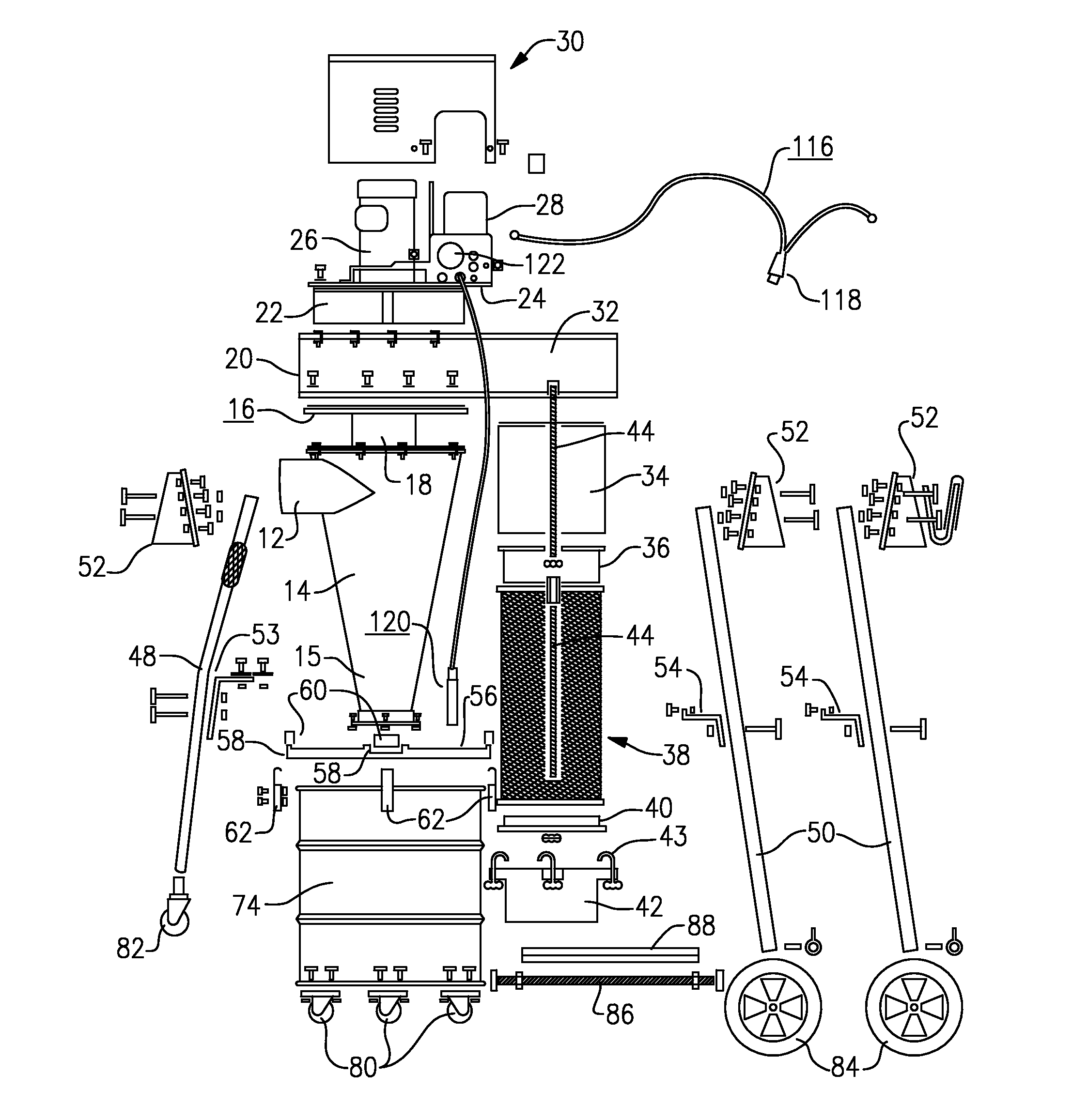Cyclonic dust collector with vee-shaped cyclone
a cyclone and dust collector technology, applied in the field of dust collection systems, can solve the problems of high pressure and velocity, unfavorable dust separation, and poor design or undersized dust ports of manufacturers, and achieve the effects of improving dust separation, improving dust separation, and improving performance and separation
- Summary
- Abstract
- Description
- Claims
- Application Information
AI Technical Summary
Benefits of technology
Problems solved by technology
Method used
Image
Examples
Embodiment Construction
[0053]With reference to the Drawing, and initially to FIGS. 1, 1a, and 2, a portable cyclonic dust collector 10 is provided with an intake duct 12 that penetrates a conic separator body 14 which is of a conic shape, and having a conic wall that extends from a lower nose 15 to a divider plate 16 (shown in FIG. 4) at the top of the conic wall, so that a cyclonic separation chamber is defined within the conic body between to lower nose 15 and the upper or divider plate 16. A vortex tube 18 descends from a central opening of the divider plate 16 for a distance into the cyclonic separation chamber.
[0054]A fan housing 20 is situated above the conic body 14, and contains a rotary radial fan 22 with a vertical axis centered on the axis of the body 14 and vortex tube 18. A motor plate 24 closes off the top of the fan housing 20, and supports a vertical-shaft drive motor 26 for the fan 22, which in a preferred embodiment is a three-phase AC induction motor. A motor drive circuit 28, as explai...
PUM
| Property | Measurement | Unit |
|---|---|---|
| apex angle | aaaaa | aaaaa |
| concentration | aaaaa | aaaaa |
| frequency | aaaaa | aaaaa |
Abstract
Description
Claims
Application Information
 Login to View More
Login to View More - R&D Engineer
- R&D Manager
- IP Professional
- Industry Leading Data Capabilities
- Powerful AI technology
- Patent DNA Extraction
Browse by: Latest US Patents, China's latest patents, Technical Efficacy Thesaurus, Application Domain, Technology Topic, Popular Technical Reports.
© 2024 PatSnap. All rights reserved.Legal|Privacy policy|Modern Slavery Act Transparency Statement|Sitemap|About US| Contact US: help@patsnap.com










